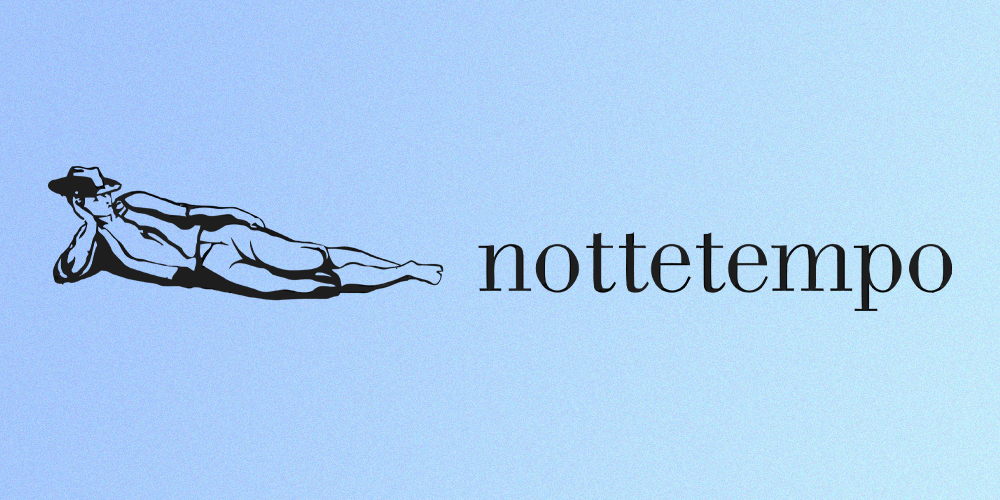
The second publishing house in our history is Adelphi. A Milan-based publishing house, whose logo is synonymous for you readers with reliability and quality that this publisher was able to create from the very beginning.
The logo of the Adelphi publishing house itself is an ancient Chinese pictogram “of the new moon,” a symbol of death and rebirth. The meaning dates back to the circumstances surrounding the founding of the publishing house: Luciano Foà left the Einaudi publishing house in 1961 after he rejected the publication of Friedrich Nietzsche’s critical work. The following year, he founded a new publishing house, which published Nietzsche’s critical work: Adelphi. With him were Giorgio Colli, Roberto Olivetti, Alberto Zevi, and many others.
The name Adelphi is a Greek word meaning brothers, companions, just like the founding partners who chose it.

Editorial consultant for Adelphi and also for other publishers throughout his life, Roberto Bazlen was the one who gave an important boost to the publishing house. For him, Adelphi was the publishing house of Nietzsche, as well as many other authors considered unique: “Ultimately, the unique book is the one where it is immediately clear that something has happened to the author, and that something has ended up being deposited in a written work.”
A significant moment was the publication of the works of Croce, Buchner, Keller, and Dossi in the “Classics” series.
The Classics, quoting the promotional flyer that accompanied their publication, are not “benchmarks or obstacles, but works and authors that will gradually appear to us as contemporaneous and necessary as we progress.”

The graphic design of the publishing house was entrusted to Enzo Mari, who was introduced through Solmi.
It was Michele Ranchetti, a curious and unclassifiable intellectual figure, who suggested using a graphic scheme by Aubrey Beardsley, a 19th-century English engraver and illustrator, for the covers of the Adelphi Library books (1965).

This was the series that defined the entire cultural proposal of the publishing house, at least until the 1980s (“a series that guarantees absolute freedom of movement: a vibrant, full, and unusual experience”); books and authors envisioned by Bazlen, Foà, Calasso, and Solmi continued to be published there.
They were 20th-century authors, some belonging to the literary and artistic avant-garde, French and German, great storytellers of the interwar period, previously neglected by Italian publishing, but there were also authors of religious texts, Eastern classics, and books about life experiences.
The first titles of the Adelphi Library were The Other Part by Alfred Kubin, Father and Son by Edmund Gosse, Manuscript Found in Saragossa by Potocki, In the Land of the Tarahumara by Antonin Artaud; the first three were published in 1965. That year, Bobi Bazlen passed away, and it was a great loss for everyone.
Fortunately, he left letters and books to be published, which were wisely used in the following years.

Alongside the historical series, which includes authors such as Simenon, Sacks, Simone Weil, and Rot, several minor series were also launched.
“Fabula”, entirely dedicated to fiction, launched in 1985 with the bestseller “The Unbearable Lightness of Being” by Kundera, and including works by Ortese, Maurensig, T. Bernhard;
“Adelphi”, a series of pocket-sized books featuring titles from the catalog, such as Simenon;
Various essay series such as Collezione Il Ramo d’Oro for religion, anthropology, and mythology, Biblioteca filosofica, Biblioteca orientale, Biblioteca scientifica, Ethologica.
Additionally, special collections were created dedicated to Roberto Bazlen, Carlo Michelstaedter, Sergio Solmi, and Emanuele Severino.
With the economic crisis of 1964, Adelphi became more closely linked to the Boringhieri publishing house;
it joined the commercial network of the Turin-based publisher, but soon after acquired Frassinelli, which had titles by Hesse, Joyce, Kafka, Melville, and what would become Adelphi’s ultimate long-seller, Siddhartha.
During this time, Adelphi also changed its distribution network. Meanwhile, the first volumes of Nietzsche’s works were published: Aurora, the Blue Notes by Dossi edited by Dante Isella, and the Essays by Montaigne.
Between 1968 and the early 1970s, the publishing output of the house contracted instead of expanding: from 17 titles in 1968 to 13 in 1970.
Nevertheless, the La piccola biblioteca Adephi series, better known as PBA, was born in 1973 with Hesse’s Pilgrimage in the East. This series has remained very successful to this day.
Roberto Calasso became an increasingly prominent figure and in 1971 became the editorial director of the publishing house.
The editorial success began in the late 1970s when the Italian cultural landscape changed: the collapse of postwar myths and political ideologies.
In this broader story, Luciano Foà played at least three significant roles: publisher, translator, and curator of volumes. Armed with small pencils and smoking thin cigarettes, he edited, revised, and worked until the last years of his life (he died in 2005).
His authors, whom he published as a translator with Adelphi, included Goethe, Kafka, Walser, as well as Huxley and Norman Douglas.
He translated, using the pseudonym Luciano Fabbri, at least two books by Joseph Roth and reviewed all the translations of this author, as well as those by Konrad Lorenz, Hoffmansthal, and Walser.
Today, the publishing house remains owned by Roberto Calasso and other minority shareholders.
As you may have gathered from the story, this publishing house is closely connected to the people who have worked there, dedicating their lives to it.
Would you like to discover more stories about Italian publishing houses?
Here you can find all our articles.










